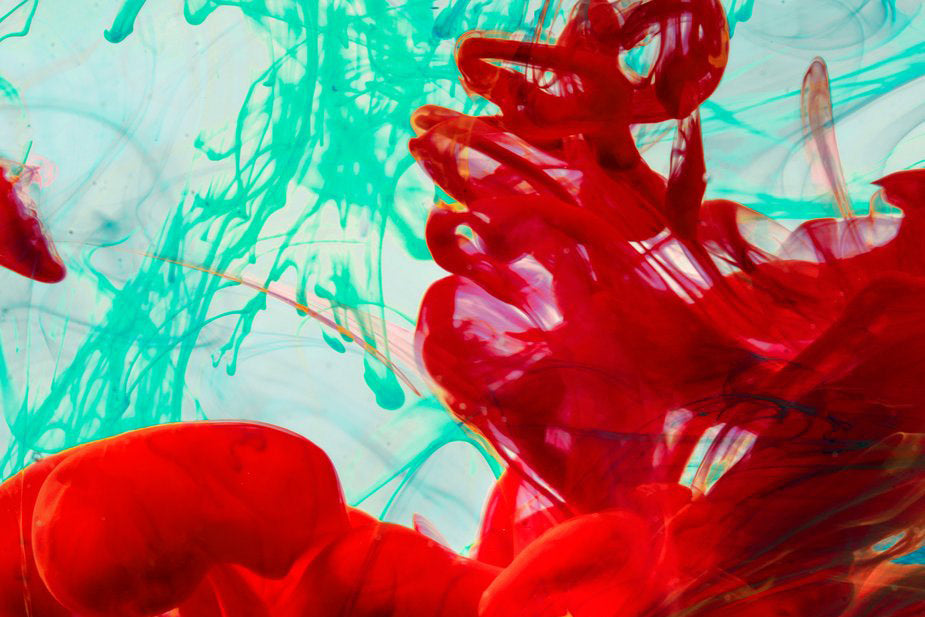“I never used to like orange. In fact, I really disliked the colour because it was so bright. But, well, one day after an especially difficult week I decided it was my colour, and since then I haven’t stopped wearing it…” the speaker of those words was indeed a lover of the colour orange. She had dyed her hair a subdued red shade with orange highlights, which looked like little flames on her petite head, and she would walk in confident strides with a vibrant orange scarf wrapped loosely around her neck – a thoughtful gift to her from a friend who had just returned from an ashram in India.
She, like many of us, was connected to the subtle energies of the world around her, and recognised the importance of colour, and how she could use it to influence her mood and emotions. For my orange-loving friend, she decided to use this colour therapeutically to transform herself from a serious and solemn person, into a vibrant and joyous woman. The transformation did not go unnoticed, and only highlighted the power of applying colour therapeutically to inspire and motivate healing and change.
This use of colour is often referred to as colour therapy, which is a form of healing that uses the energies of light and colour to harmonise the body, mind and soul. It achieves this by mastering the use of colour in as many aspects of our life as possible—from our personal affinities with specific colours to the hues of our living and working spaces. Through these means, colour therapists are able to introduce the optimum balance of colour energies into a person’s life in order to promote harmony and to balance mind, body and spirit.
The reason they are able to achieve this harmony and balance is because colour has the ability to tap deeply into our emotional states. It emerges in our everyday language and expressions. Humour can be ‘black,’ while silence is ‘golden.’ One can ‘see red’ or look at life through ‘rose coloured glasses.’ One can be ‘livid,’ ‘green with envy,’ or ‘white as a sheet.’ One can also feel ‘blue,’ or even a bit ‘off colour.’ What this means is that the entire phenomenon of colour is deeply embedded not just in our language but in our psyche.
When studying colour therapy, or applying its therapeutic benefits to our lives, it is best to view colour as possessing unique characteristics that can be enhanced or subdued, either by increasing or decreasing the presence of this specific colour in a person’s life. Within the colour therapy framework, we recognise the effects of colour on the emotional state of an individual so that we can bring the full spectrum of mental and emotional activity to play in their lives. Passion, zest, warmth, relaxation, nourishment, nurturing, introspection, spirituality—all can be evoked through embracing the full range of colour in their appropriate proportions and harmonies.
Colour therapy, in addition to being a therapy in its own right, is also an excellent complementary therapy. It works well in conjunction with other natural therapies such as reflexology, massage, crystal therapy and so on. Because it is a sense-based therapy, it harmonises exceedingly well with the other sense-based therapies, such as aromatherapy and sound healing. A good practitioner will learn how light, aroma and sound work together through a process of synergy. This can be further integrated into touch (massage, acupressure etc.) and taste (cooking, nutrition) to harmonise all the modalities of our lives.
If you are interested in colour therapy and would like to begin implementing the therapeutic benefits of colour in your life, the following is a useful guide. It covers some popular colours and some of their therapeutic benefits – which is a good starting point.
Red. This colour is one of the most therapeutic colours to work with. As the longest wavelength in the visible spectrum, it is the colour of blood and fire and, as such, is regarded universally as representing life-force and energy. Colour therapists use the colour red to bring a sense of energy and vitality into their client’s life, and to aid in the stimulation of blood in the body.
Green. This colour is a combination between blue and yellow. It is associated with nature, healing, and motherly love. As a healing colour, medicine is often associated with the colour green, as too balance and renewal. Colour therapists use the colour green to promote emotional and physical healing in clients, and to promote self-love and balance.
Blue. This colour is a primary colour (along with red) and is often linked with leadership and authority. As an authoritarian colour, it is no wonder police officers wear blue in various shades. Blue is also associated with expression and speech, and the ability to communicate our needs openly and honesty with others. Colour therapists use the colour blue to bring order into a client’s chaotic life, and to treat issues surrounding ineffective communication.
Orange. This colour is the combination between red and yellow – and a favourite of my friend! Orange possesses the energy of reckless fun, spontaneity, and child-like desire. Orange is a colour that uplifts and motivates and is often worn to promote a positive self-image to others. Colour therapists use orange to bring a spark of life into a lethargic or depressed client. It can also be worn to elicit curious interest from others, and to promote self-acceptance and self-worth.
Yellow. This colour is closely associated with gold and the Sun’s rays and has the qualities to manifest power. It represents light and life, as well as youth, strength, and divine immortality. Colour therapists use the colour yellow to strengthen a client’s resolve and to promote a sense of purpose and intellectual curiosity in life.
Purple. This colour is considered a very spiritual colour and is closely associated with the unconscious elements of one’s psyche. It is useful in meditation and all spiritual development activities, including artistic creation and religious rites of passage. Colour therapists often use this colour to help clients to reconnect with their spiritual nature, or to explore elements of the psyche not yet known by the conscious mind.
Again, this is just a short exploration into some of these colours therapeutic benefits. Naturally, there are many shades and hues of colours to explore, and each carry its own unique therapeutic signature. With that in mind, Colour therapy is an art well worth studying further.
Health and Harmony Colleges ©


0 comments